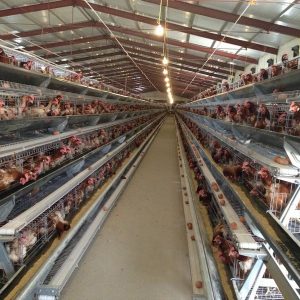There are many things to pay attention to in breeding. For example, the construction conditions of the site, the provision of food, the prevention and control of diseases, etc., are very worrying. Although the breeding of colorful pheasants has strong adaptability and disease resistance, high temperature resistance and severe cold resistance. , Artificial breeding is not restricted by region, but having more experience and skills will make colorful pheasant breeding easier.
1. Precautions for breeding colorful pheasants
The colorful pheasant has a strong wild nature and is more afraid of people. It is not suitable to choose the colorful pheasant project in residential areas and highways. Pay attention to quality when buying seeds, seedlings and eggs. Pay attention to the breeding density, no more than 5 per square meter, and prevent pecking. Pay attention to controlling the condition of the hen to reduce the dystocia of laying eggs. Pay attention to disease prevention and control.
2. How to choose colorful pheasant breeding eggs
First, the quality of breeding eggs should be fresh. Generally speaking, the eggs used for breeding are the best eggs produced within 10 days, because the hatching rate of the eggs produced during this period is higher, and the hatched chicks are often ten healthy and strong, and their survival rate is extremely high. high.
Second, the shape and size of the breeding eggs should be appropriate. Eggs that are too big, too small or too round or too long are not suitable for hatching fertile cones.
Third, the outer structure of the breeding eggs should be normal. Eggs with abnormal appearance, such as thin-shelled eggs, thick-shelled eggs, or “sand skin eggs”, are not suitable for hatching.
Fourth, the surface of the egg shell of the breeding eggs should be clean and there should be no cracks. Eggs with dirty shells or cracked eggs are often contaminated by microorganisms and are most vulnerable to decay, which directly leads to hatching failure.
Fifth, all breeding eggs used for brooding must be sourced from healthy chicken flocks that are raised and managed normally to avoid illness.
3. How to prevent colorful pheasant pecking
(1) Beak cutting: Actual beak cutting is an effective means to prevent egg pecking and other pecking addictions. The young pheasants were cut off their beak once at 15-20 days old, the second beak cut at 70 days old, and the beak was trimmed once before delivery. The male pheasant has a broken beak tip.
(2) Density control: The breeding density of pheasants does not exceed 5 per square meter, and each group does not exceed 80.
(3) Sand baths: The pheasant nets are indoors with 5 cm thick sand, and there are sand baths in the playground.
(4) Set up nests: Set up corresponding nests and barriers to block the line of sight during the breeding period.
(5) Wear eye mask: A transparent red eye mask should be used, with a nose needle made of nylon or iron wire, so that the eye mask is placed on the beak, and the pin passes through the nasal cavity to fix the eye mask.
(6) Pick up eggs frequently: Pick up eggs at least twice a day. The eggs laid on the sports field should be collected in time to reduce the chance of pheasants’ contact with the eggs and prevent egg pecking.
(7) Place fake eggs: use bionic plastic pheasant fake eggs, put them in the breeding pheasant house, and gradually change the pecking habit if they can’t be broken.
(8) Device nose ring: The nose ring is assembled on the upper beak of the pheasant and fixed on the nostril with a nose ring needle, but do not clamp into the tissue. Choose a nose ring suitable for the age of the pheasant. Generally you can wear it at 4 weeks of age, and wear it until 16 weeks of age. For those that are reserved for seed use, the nose ring is removed with a cutter at 16 weeks of age, and an adult pheasant nose ring is installed. This ring does not affect normal activities such as eating and drinking.
(9) Regular deworming: The parasites on the body surface and in the body should be removed with medicine regularly to prevent feather pecking.

